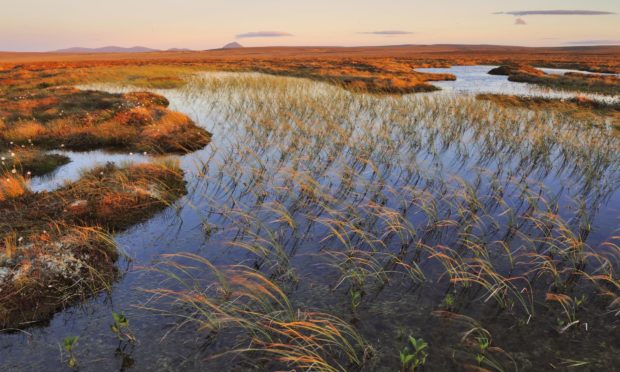A new draft strategy for the Flow Country peatlands of Caithness and Sutherland could help the case for making the internationally important area a World Heritage Site.
A public consultation has been launched to seek local views on the strategy that envisages making a submission for UNESCO world heritage status by early 2023.
It also proposes promoting the area as a green tourism destination, as well as greater community involvement in managing the peatlands, actions to contribute to climate change projects and to minimise impact on the area from development including wind farms.
The document has been drafted by NatureScot on behalf of the multi-agency Peatlands Partnership, formed in 2006 shortly after the first management strategy in 2005.
Caithness and Sutherland are home to the largest and most intact area of blanket bog in Europe, with 4% of the world’s resource. The area supports a wide range of wildlife and is a vitally important store for carbon.
Professor Stuart Gibb, of the Environmental Research Institute in Thurso, who chairs the Peatland Partnership, said the new strategy follows previous initiatives, including the five-year £11 million Flows to the Future Project which helped restore blanket bog habitat.
“Our new draft strategy seeks to build on this success, and includes the aspiration to secure inscription of The Flow Country as a UNESCO World Heritage Site.
“It also recognises recent changes in public sector policy including the Scottish Government’s declaration of a climate emergency and biodiversity crisis, and ‘green recovery’ opportunities emerging from the global Covid-19 pandemic. However, as with the original strategy we aim to embed the relationship between people and peatlands at the heart of our new approach.”
Graham Neville, NatureScot’s Northern Isles and North Highland area manager, added: “This important area of expansive blanket bog requires careful management at the landscape scale to ensure that it remains healthy.
“The communities and businesses that depend on the peatlands all have a stake in this, and the strategy aims to co-ordinate action to enhance and promote it through sustainable land management and community development.
“Since 2005, we have seen major advances in peatland restoration and related research. Research into the impact of forestry on adjacent peatland and on restoration techniques has guided the removal of inappropriately planted trees and the blocking of peatland drains and furrows across Caithness and Sutherland to raise the water table to facilitate bog re-creation.”
The strategy says the condition of the blanket bog across the Special Area of Conservation remains ‘unfavourable’ for a number of reasons including the effects of forestry, drainage, trampling and wildfire damage.
It suggests establishing a Flow Country wildfire group to minimise the risk and impact of fires, as well as landscape sensitivity appraisals for future wind energy developments, with particular focus on cumulative impacts.
It highlights a lack of direct community involvement in the management of the peatlands and says community engagement has the potential to address local priorities, retain economic benefit and provide a sense of ownership.
Proposed actions include community representatives on the Peatlands Partnership.
